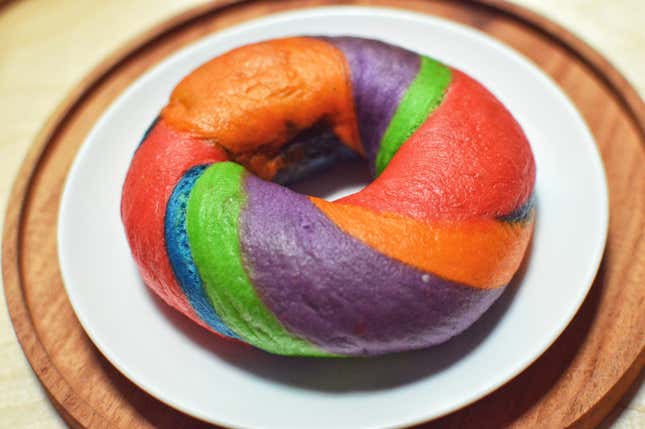
Certain food dyes may play a role in triggering symptoms of inflammatory bowel disease (IBD), new research, done in mice, suggests. The study found that yellow and red food dye could trigger chronic gut inflammation in mice, but only if their immune systems were already dysfunctional. The findings will need to be further investigated, but they could someday carry important implications for the treatment and management of IBD patients, whose symptoms are often triggered by specific foods and drinks.
People with IBD develop prolonged episodes of gut inflammation, which can lead to recurrent flare-ups of symptoms like diarrhea, fever, and painful cramps. The exact causes of IBD are still a mystery, but it’s known that genetics and an imbalanced immune system are major drivers of IBD symptoms. One of the components of the immune system often linked to IBD is higher levels of a protein known as interleukin-23 (IL-23), and several treatments for IBD are thought to work by tamping it down.
Researchers from Mount Sinai’s Icahn School of Medicine have been working with mice made to have the sort of dysregulated IL-23 seen in some IBD patients. But their earlier research had shown that simply having too much IL-23 wasn’t enough for the mice to start developing colitis, or chronic inflammation of the colon. It was only after feeding them a certain diet that the mice became sick. And after looking at specific parts of the diet, the researchers theorized that two common food dyes, Red 40 and Yellow 6, could have been the instigating ingredients.
Their new study, published in Cell Metabolism on Thursday, seems to show they were right. When they fed these mice food or water that contained the dyes, they developed colitis. But no similar effect was seen when they fed healthy control mice these dyes or when the dysregulated mice were fed diets without either dye.
“Our observations suggest that food colorants may have a role in the generation of human disease and may help understand how IL-23 influences the disease,” senior author Sergio Lira, a researcher at the Precision Immunology Institute at Icahn Mount Sinai, told Gizmodo in an email. “However, much needs to be done to understand how exactly these factors intersect, and whether they are relevant in human disease.”
IBD is a complex condition, though, and IL-23 isn’t the only culprit that’s thought to raise the risk of having IBD episodes. These new findings also have to be verified further before we can be sure that there’s a true connection between IBD and food dye consumption. But if this link is confirmed, then it could one day impact the care of IBD patients. Some people with IBD report that certain foods or drinks make them more likely to experience flare-ups. And if these food dyes are implicated as a trigger, that could heavily affect these people’s diets, since Red 40 and Yellow 6 are found in so many products. Both are also commonly used in drug packaging.
At least for now, though, Lira cautions that their research shouldn’t be used to make decisions about the care of those with IBD. “Our data does not have immediate implications for the treatment of patients with IBD,” he said.
Until more evidence is gathered, Lira says that animals should remain the key focus of this area of research. “Our lab focuses now on two basic questions: how do normal mice acquire tolerance to the food colorants and how does the dysregulation in IL-23 expression change this effect?” he said.
This article has been updated with comments from one of the study’s authors.